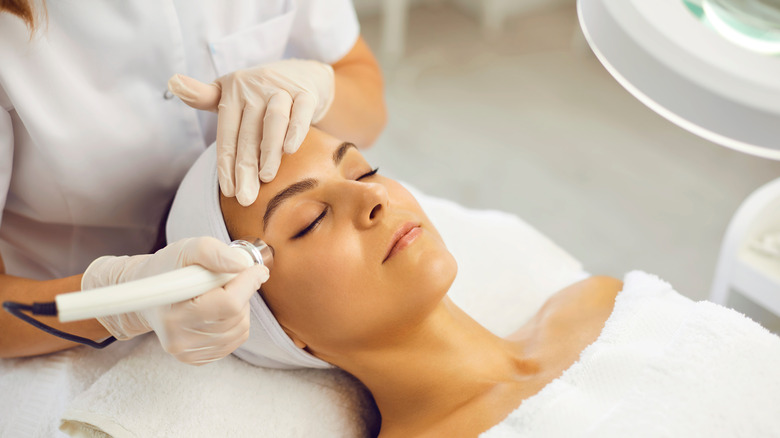What You Should Know Before Using A Microcurrent Device
If you're looking for a new beauty gadget to up your skincare game, look no further. One of the latest skincare tools to hit the market is the microcurrent device. According to experts at Real Simple, microcurrent devices are facial tools that use low-voltage electricity to stimulate the muscles and cells in your face. This can help improve the overall quality of your skin.
"These facials tighten and smooth the muscles and connective tissues in your face by increasing cellular activity," Dr. Annie Gonzalez, a board-certified dermatologist at Riverchase Dermatology in Miami, Florida, told Real Simple. You (and your skin) can benefit from both at-home microcurrent devices and in-office treatments, which vary based on the strength of the current and wavelength. Both options are safe and effective. Since at-home devices typically have a lower current than in-office equipment, you'll have to use them more frequently to get the same effect.
How microcurrent devices work
Microcurrent devices mimic the body's natural pulses in order to stimulate the muscles in the face, activating the regenerative process. According to Mindbodygreen, this can help boost the production of collagen and elastin. Now you might be wondering what it feels like to use one. "It's very relaxing," Pooja Johari, a holistic skincare expert and founder of 7E Wellness, told Mindbodygreen. "If it's a true microcurrent, muscles will not twitch or jump." If you do, it might be a red flag.
When using a microcurrent tool at home, be sure to apply the right conductive gel to your skin. Microcurrent needs to be used with a conductive substance so that the current can penetrate the skin easily, and the devices require water-based formulations in order to work. It's important to use a high-quality product with natural ingredients. "Microcurrent tools help ingredients penetrate further into the skin, so you want to make sure that the ingredients are nonirritating," Johari points out via Mindbodygreen.


